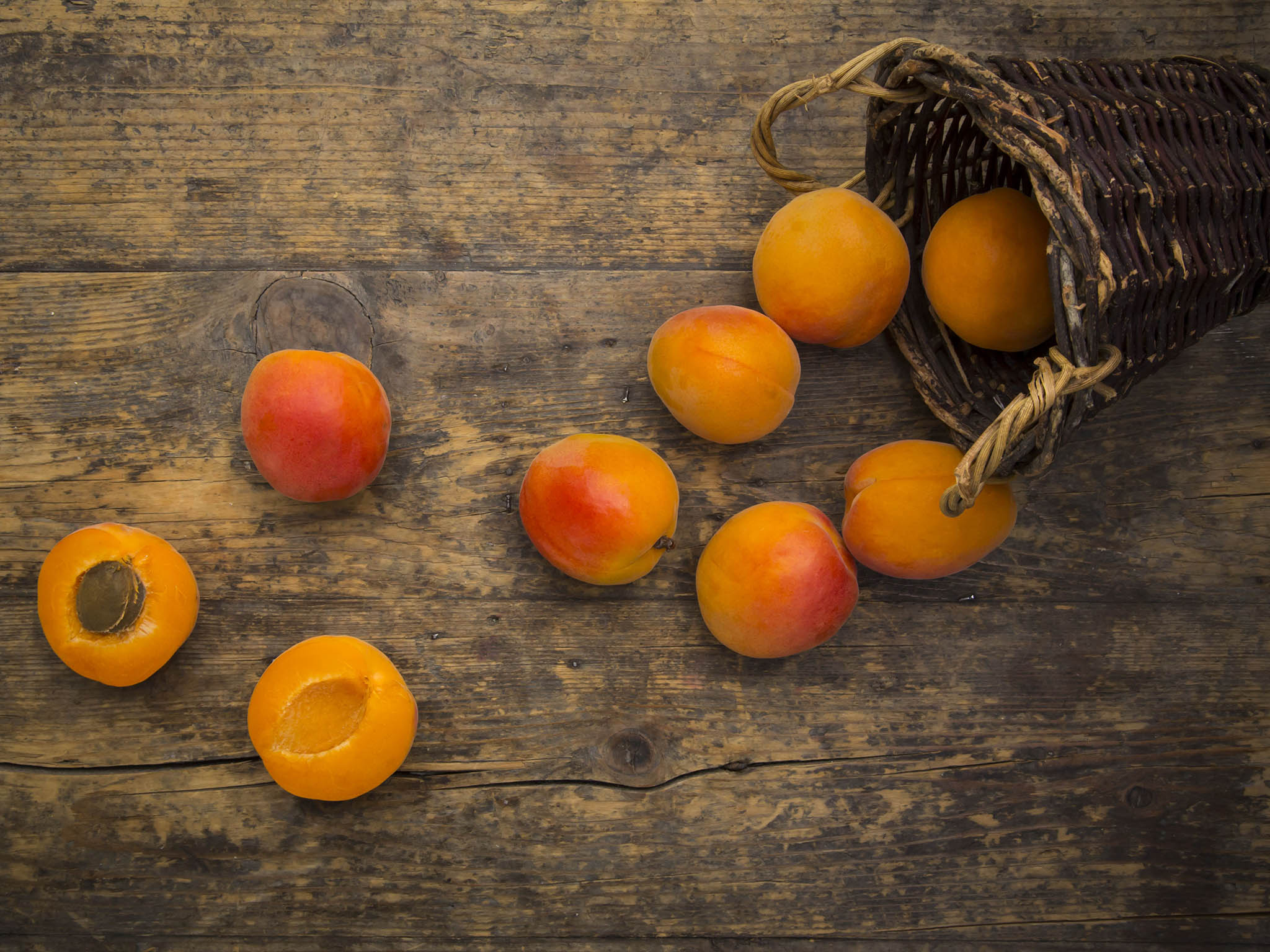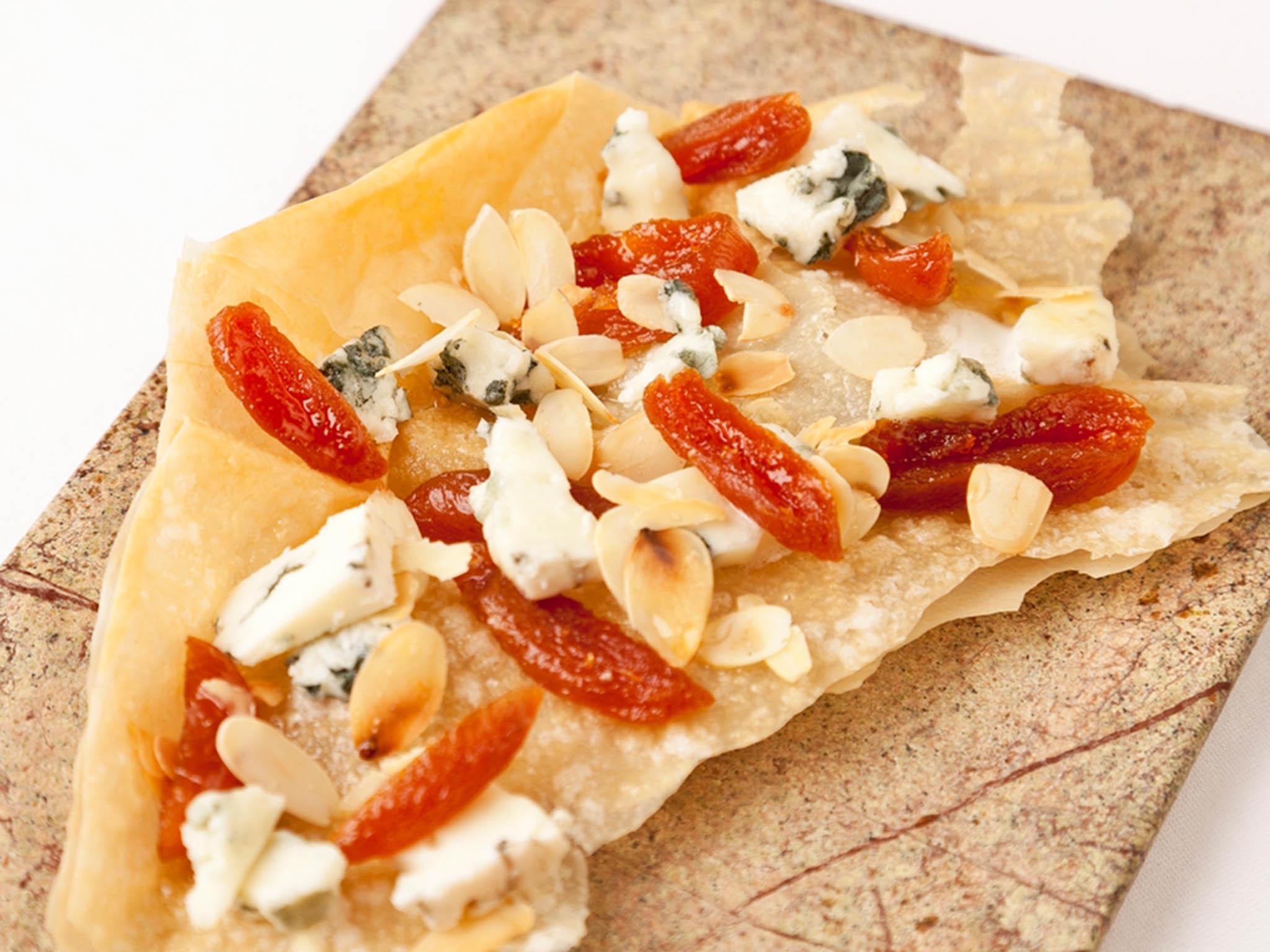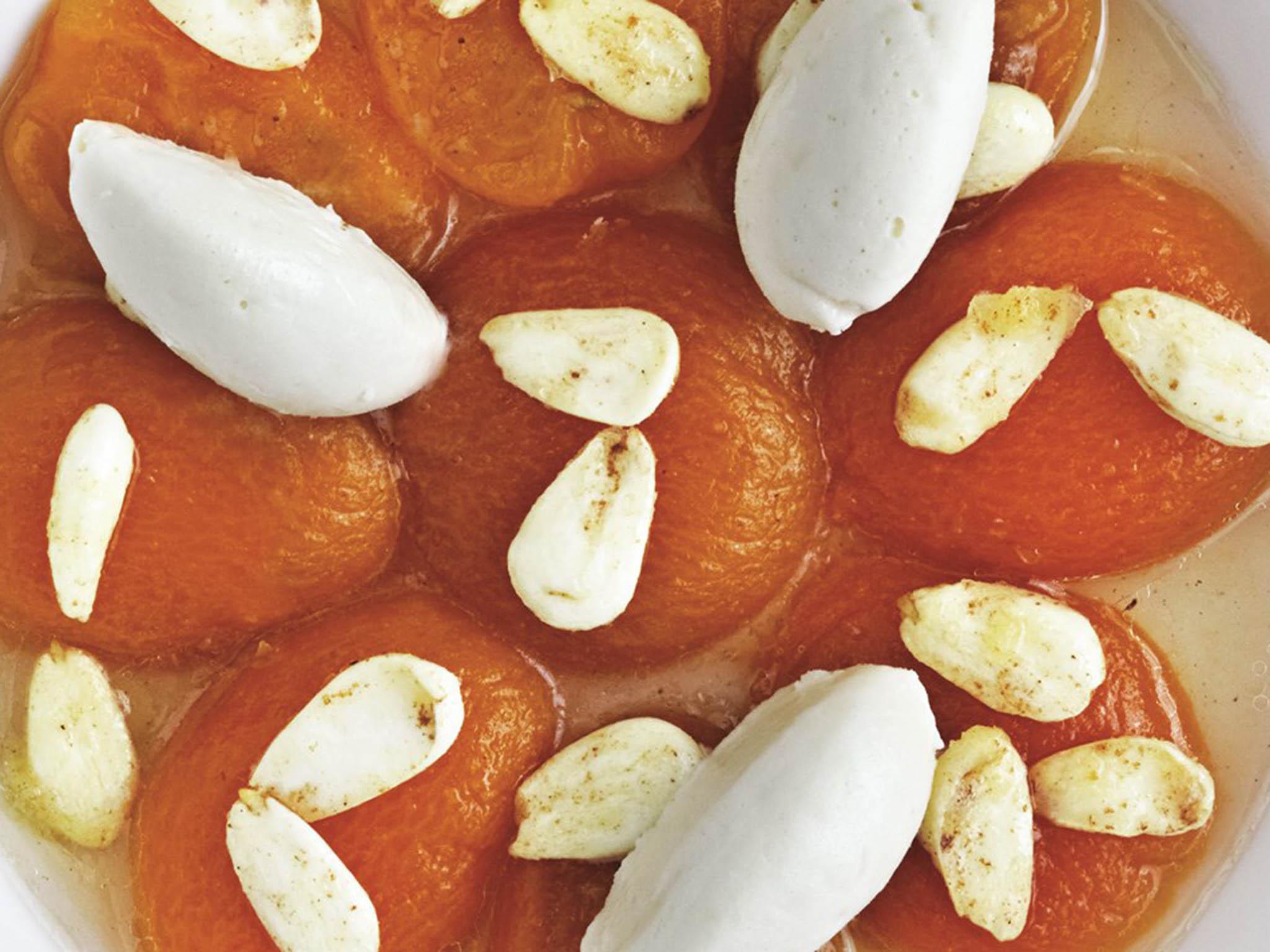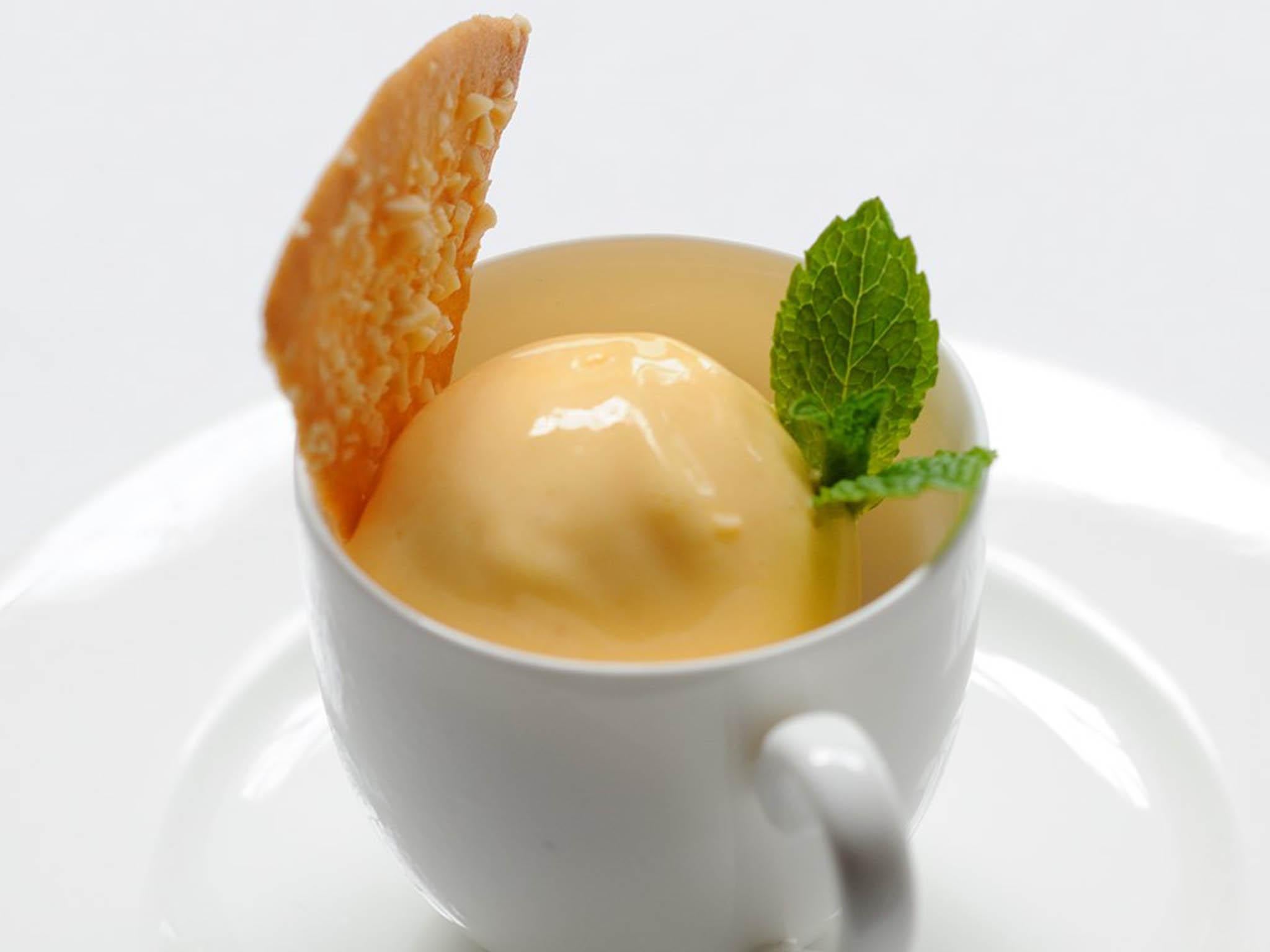Golden delicious: Seasonal apricot recipes for July
These red and yellow-speckled stone fruits might look foreign and exotic, but they’re grown in the UK. Tom Shingler lists his favourite ways to prepare them, using recipes from the UK’s best chefs

Your support helps us to tell the story
From reproductive rights to climate change to Big Tech, The Independent is on the ground when the story is developing. Whether it's investigating the financials of Elon Musk's pro-Trump PAC or producing our latest documentary, 'The A Word', which shines a light on the American women fighting for reproductive rights, we know how important it is to parse out the facts from the messaging.
At such a critical moment in US history, we need reporters on the ground. Your donation allows us to keep sending journalists to speak to both sides of the story.
The Independent is trusted by Americans across the entire political spectrum. And unlike many other quality news outlets, we choose not to lock Americans out of our reporting and analysis with paywalls. We believe quality journalism should be available to everyone, paid for by those who can afford it.
Your support makes all the difference.It’s hard to say no when someone offers you a fresh, ripe apricot. The velvety, fuzzy skin, soft juicy texture and perfumed sweet flavour is pretty hard to beat in terms of gastronomic pleasure, and before you know it your sticky fingers are reaching for another one. Dried apricots are available year-round and imported fresh fruit will do in a pinch, but get your hands on a British-grown specimen in the summer and you’ll realise just how special these stone fruits are.
While they’re perfectly delicious eaten on their own, apricots can be used to great effect in both sweet and savoury dishes. North Africans are known for their love of combining lamb and apricots, and the fruit’s sweet flavour contrasts beautifully with all sorts of fatty meats. But there are plenty of other ways to cook with apricots when they’re fresh and in season – take a look at how some of the UK’s most accomplished chefs make the most of them in their recipes.

Oysters in crispy tempura batter with apricot purée by Chris Horridge
Oysters and apricots is a combination that’s probably never crossed your mind, but they actually go together incredibly well; the sweetness of the fruit working in tandem with the fresh, salty flavour of the shellfish. Chris Horridge is known for his striking, inventive cuisine, and while this dish looks complex, it’s easy to prepare. A simple apricot purée is made from apricots, sugar and a little orange juice, while the oysters are coated in a light tempura batter before being deep-fried. Serve them in their shells with a sprig of coriander cress on top for serious wow factor.
Oysters
12 oysters
20g of cornflour
1000ml of oil
Tempura Batter
50g of cornflour
50g of rice flour
½ tsp baking powder
1 pinch of salt
50ml of vodka
50ml of water
Apricot purée
6 apricots, pitted
1 pinch of salt
60g of caster sugar
50ml of orange juice
To plate
200g of rock salt
For the apricot purée, chop the apricots and mix with the salt and sugar. Put in a pan and cook to a thick chunky purée. Blitz in a blender adding some orange juice to thin it if required. For the tempura batter, put the ingredients in a blender and blend for 10 seconds to make a light batter. If it’s too thin then add more flour. If it's too thick add a little more water.
Remove the oysters from their shells and put aside. Sterilise the oyster shells by scraping away the excess oyster from inside the shell and boiling them in water for 5 minutes, then plunge them into cold water. Heat a deep fat fryer filled with the oil. Lightly dust the oysters in the remaining cornflour. Dip into the batter and deep fry for around 2 minutes or until crispy. Drain on kitchen paper.
To plate, spoon some rock salt onto a tile or plate. Sit the sterilised shells on it, spoon some apricot purée into each and put the hot fried oysters on top. Serve immediately.

Roquefort pie with aromatic apricots by Pascal Aussignac
Here’s another ingredient pairing that’s pretty leftfield – blue cheese, apricots and almonds – but the more you think about it, the more it makes sense. Blue cheese always goes well with sweet fruits, and chef Pascal Aussignac lends his inimitable flair to this recipe, a sort of deconstructed ‘pie’ that looks fantastic and will get people talking at any dinner party. He sprinkles crumbled Roquefort, flaked almonds and Armagnac-poached apricots over sheets of crisp, buttery filo pastry; a beautiful canapé that offers something different from the standard fare.
Filo crisps
40g of butter, plus more for greasing
2 sheets of filo pastry
1 tbsp of granulated sugar
Poached apricots
12 apricots, semi-dried
100ml of water
1 tsp granulated sugar
2 tbsp of Armagnac
To plate
200g of Roquefort cheese
50g of blanched almonds, sliced
Preheat the oven to 180°C/gas mark 4.
To clarify the butter, melt it in a saucepan. Let the hot butter liquid stand for a few minutes so that the solids sink to the bottom. Pour off the buttery oil into a cup or jug and discard the solids. Brush the filo pastry sheets in the middle with the clarified butter. Fold, and then brush them with butter again on top.
Lay 4 long-handled wooden spoons evenly across a baking sheet. Drape the doubled-buttered filo sheets along the baking sheet over the spoon handles so that there are ridges and furrows. Sprinkle with the sugar.
Bake the filo pastry in the oven for 8-10 minutes until it is golden and crisp. Remove and allow to cool before carefully removing the spoons. For the apricots, snip each apricot into 4 and poach in the water with the sugar and Armagnac for 5-10 minutes. The apricots should be soft and the liquid should be absorbed.
Use kitchen scissors to snip the pastry into 4 long fingers along the furrows. Crumble the Roquefort and sprinkle over the pastry, along with the almonds and apricots, and plate as desired.

Spiced lamb and apricot filo pie by Russell Brown
Carrying on from the filo and apricot pie theme is Russell Brown’s lamb and apricot pie – a sort of tagine encased in pastry. While Russell uses dried apricots, try using fresh instead for a more seasonal, lighter, flavour. The combination of spiced lamb, wilted spinach, sweet apricots and buttery filo pastry is a real treat, and the way the pie is put together looks beautiful.
6 filo pastry sheets
500g of lamb mince
1 onion, peeled and diced
2 garlic cloves, crushed
1 ¼ tsp cumin powder
1 tsp mustard seeds
1 ¼ tsp sumac
¼ tsp cinnamon
1 tbsp of tomato purée
500ml of lamb stock
100g of dried apricots, diced
2 tsp cornflour, to thicken
200g of spinach
olive oil
maldon salt
freshly ground black pepper
50g of butter, melted
2 tbsp of water
Add a little olive oil to a large pan and fry the lamb mince in small batches until well coloured. Drain the mince in a sieve set over a bowl to remove any excess moisture. In the same pan sweat off the onion and garlic until softened, then add the spices and cook for 1 minute, stirring constantly. Stir in the tomato purée and continue to cook for a further minute.
Return the mince to the pan, add the lamb stock and some seasoning, then simmer gently for 1½ hours, topping up with water if it starts to dry out too much. Add in the apricots and cook for a further 20 minutes, adjusting the seasoning to taste. Mix the cornflour with 2 tbsp cold water and add gradually to the lamb mixture, stirring well until it has thickened – the mixture should be thick and fairly dry.
In a separate pan, add a little olive oil, the spinach and some seasoning. Stir-fry quickly over a medium-high heat, then drain and allow to cool. Once cool, squeeze out any excess moisture. Preheat the oven to 170°C/gas mark 3.
To assemble the pie, take one sheet of filo pastry and brush with melted butter, keeping the remaining pastry covered with a damp tea towel to stop it drying out. Use the sheet to line a 24cm non-stick frying pan or pie tin, then repeat with two more sheets, laying one sheet in and then the next rotating the sheets by a third of a turn as you layer them up.
Add half the lamb mixture, then a layer of spinach, followed by the remaining lamb. Fold any excess pastry over the filling and cover the meat with the three remaining filo sheets, again brushing each with melted butter and rotating as you lay each new sheet on.
Use a pair of scissors to trim the pastry so that it is 1cm bigger than the pan and then tuck the edges in using a palette knife. Transfer the pie to the preheated oven and bake for 20–30 minutes until the pastry is a rich golden brown on top. Serve the pie in slices, with a fresh salad, or Moroccan-inspired side if preferred.

Poached apricots with honey ice cream and fresh almonds by Phil Howard
For an apricot dessert with a difference, try Phil Howard’s very impressive recipe, which sees apricots poached in honey, chamomile and Sauternes wine served with homemade honey ice cream and almonds. Phil chooses fresh almonds, which are wonderfully creamy, but you can use blanched almonds instead if you’re having trouble finding them. There are quite a few elements to the dish, but you can make the ice cream in advance and the apricots need to steep in their liquor for four hours before serving, so when it comes to actually serving the dessert you only need to plate up.
Poached apricots
30 apricots, plump
500ml of water
30g of dried chamomile flowers
350g of caster sugar
30g of acacia honey
500ml of Sauternes wine
Honey ice cream
300g of acacia honey
500ml of whole milk
100ml of double cream
120g of egg yolk
75g of caster sugar
Fresh almonds
100 fresh almonds, approximately
100g of unsalted butter
First prepare the fresh almonds. Prise the almonds open with a screwdriver - through the soft spot where they were attached to the tree. Remove the nuts, peel off the skins and set aside, covered, somewhere cool. To poach the apricots, pour the water into a large, heavy-based ovenproof pan, and bring to the boil. Add the chamomile, sugar and honey. Return to the boil, remove from the heat and set aside to infuse for 5 minutes. Preheat the oven to 110°C/gas mark 4.
Pass the syrup through a fine sieve and return to the pan. Add the Sauternes and bring back to the boil. Cut the apricots in half along the groove. Twist them apart and remove the stone. Add the apricot halves to the pan, turn the heat down and return the syrup to a simmer. Cover with a lid or cartouche and place in the oven for 20 minutes or until the apricots are tender, stirring half way through cooking. Remove from the oven and leave the apricots to cool in the syrup.
Once the apricots are cool enough to handle, carefully lay them out, one at a time, and slip off the skin, then return them to the syrup. Leave the apricots to steep for at least 4 hours. Store in the fridge until required, keeping the apricots in their syrup. Lay out the 16 least attractive, overly soft apricot halves and crush them to a pulp with a fork.
Set aside to drain in a sieve for 30 minutes before pouring into a bowl. Chill until needed. For the honey ice cream, combine the milk and cream in a heavy-based pan and bring to the boil. Whisk the egg yolks with the sugar in a large bowl. Pour the boiling milk onto the egg yolks, whisk to combine and pour back into the pan.
Cook gently over a low heat, stirring with a wooden spoon until the temperature reaches 84°C - the custard should be thick enough to coat the back of the spoon. Pass through a fine sieve into a bowl. Whisk in the honey then leave to cool. Cover and chill. No more than 2 hours before serving, whisk 30ml of the apricot poaching liquor into the custard. Churn the ice cream then store in the freezer.
For the beurre noisette for the almonds, melt the butter in a pan over a medium heat until it starts to foam. When the butter is still a rich yellow colour but gives off a nutty aroma, pour through a fine sieve into a frying pan and set aside. To serve, in separate pans, warm through both the poached apricots in their syrup and the crushed apricots.
Place the pan of beurre noisette over a medium heat, add the almonds and toss for a minute or two - or until they release a nutty aroma. Remove from the heat and keep warm. Lay out 8 warmed shallow bowls. Divide the crushed apricots between the bowls, then lay the apricot halves over the top with a little drizzle of the syrup.
Place 3 small scoops of ice cream on top of the fruit in each bowl, scatter almonds over the top and finish with a little drizzle of beurre noisette.

Apricot sorbet
If Phil Howard’s poached almonds look a little too much work, try this four-ingredient dessert from Stephen Crane instead. It’s an incredibly simple dish – sugar, water and apricot purée (which you can either buy or make from scratch using Chris Horridge’s recipe above) are churned together in an ice cream maker, with a few mint leaves on top for garnish. It’s incredibly refreshing, captures the fresh taste of apricots perfectly and – best of all – can be kept in the freezer for later on in the year when fresh British apricots are no longer available.
1.18kg apricot purée
120g of sugar
50ml of water
4 sprigs of fresh mint, for garnish
Place the sugar and water into a pan, bring to the boil then remove from the heat and set aside to cool. Once cool, add the apricot purée to the syrup and mix well to combine. Churn in an ice cream maker, then freeze in a sealable container until needed. Serve with some fresh mint leaves.
Join our commenting forum
Join thought-provoking conversations, follow other Independent readers and see their replies
Comments